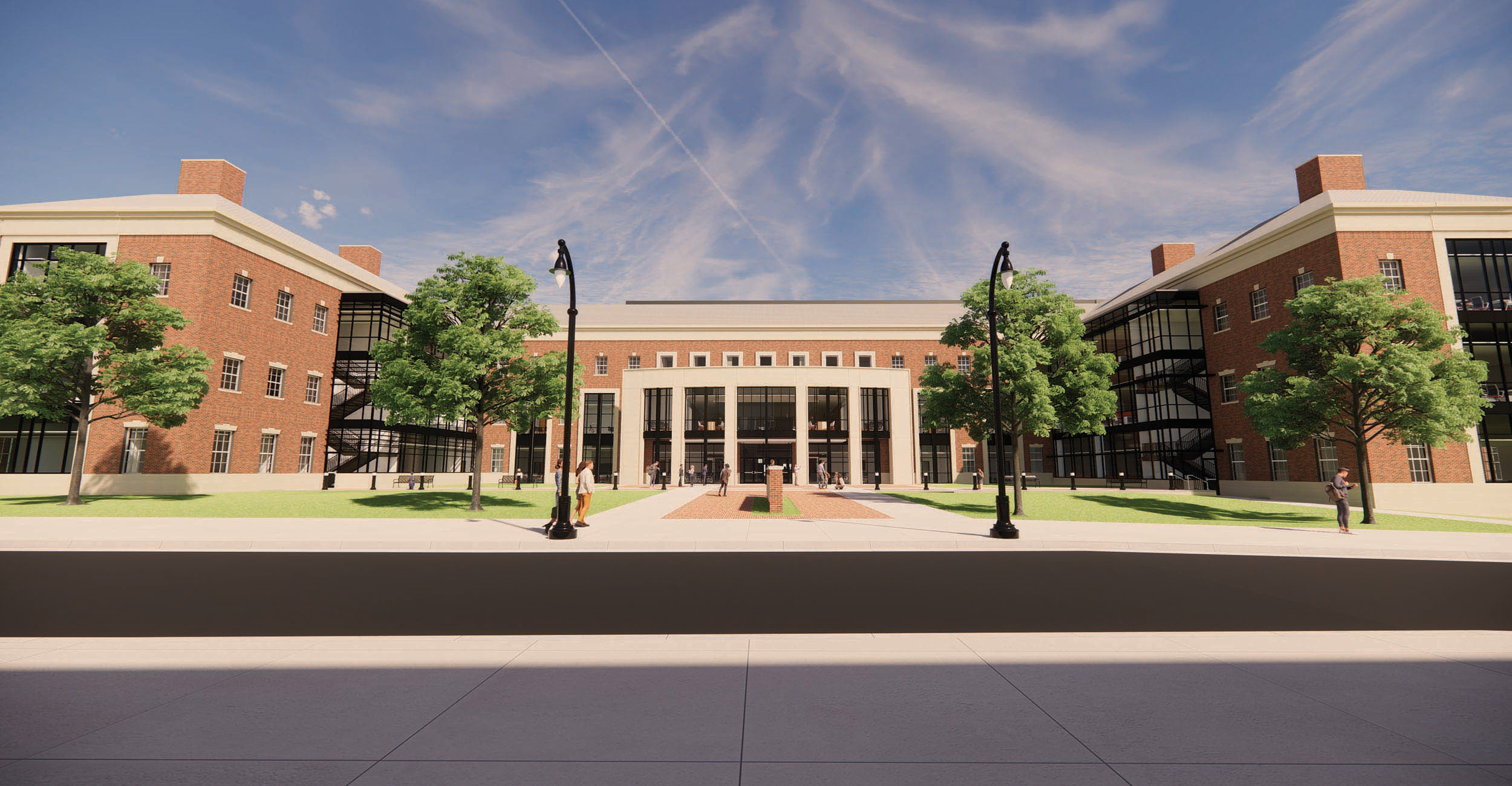
New Frontiers to foster innovation with precision agriculture
Friday, October 21, 2022
Media Contact: Harrison Hill | Senior Research Communications Specialist | 405-744-5827 | harrison.c.hill@okstate.edu
The United Nations estimates the world’s population will hit nearly 10 billion by the year 2050. Will there be enough food to feed the growing global population?
Oklahoma State University is effecting change by building a new, state-of-the-art teaching, research and Extension facility for OSU Agriculture to help combat world hunger.
When OSU alumni Kayleen and Larry Ferguson announced a historic gift that launched the New Frontiers campaign to build a new facility and rebrand the Ferguson College of Agriculture, they were called to help feed the world, said Dr. Thomas Coon, vice president and dean of OSU Agriculture.
“The New Frontiers Agricultural Hall will change and modernize our research and the way we teach scientific subjects,” he said. “It all goes back to the premise of being a modern, land-grant institution. Research has the promise to change the way we grow food and care for the natural environment we rely on. It can transform Oklahoma’s economy, fostering innovation that will feed a growing world population.”
The New Frontiers Agricultural Hall, expected to open in fall 2024, is being created with modern teaching methods in mind, utilizing flexible laboratory spaces to serve multiple disciplines and interactive classrooms to harness students’ energy along with the excitement of innovation.
The facility will strengthen the three pillars of the land-grant mission while addressing two key challenges: attracting and retaining scientific leaders; and equipping collaborative teams with state-of-the-art laboratory and field facilities.
“New Frontiers will help position faculty and students in facilities that will equip them with the skills, knowledge and the ability to work together to help solve world hunger,” Coon said. “It will transform our efforts to become even more collaborative, bringing all of OSU Agriculture’s expertise to bear on the challenges and opportunities facing the state of Oklahoma.”
One area OSU Agriculture is focusing on to help sustainably feed a growing global population is precision agriculture research and outreach.
The OSU Department of Plant and Soil Sciences is a leader in the field of precision agriculture with the development and implementation of sensor technologies.
Dr. Brian Arnall, plant and soil sciences professor and OSU Extension specialist for precision nutrient management, focuses on applied precision agriculture.
He has been involved in sensor-based technologies, remote sensing and variable rate application for more than 10 years. His work focuses on providing information and tools to producers that will lead to improved nutrient management practices and increased profitability for Oklahoma production agriculture.
“As a collaborative effort, the International Society of Precision Agriculture worked toward a standardized definition of precision agriculture,” Arnall said.
In short, precision agriculture is using information and data to make better agronomic
decisions.
When designing the New Frontiers Agricultural Hall, the OSU Agriculture team strived
to provide new opportunities and expand upon current research programs, said Dr. Randy
Raper, assistant vice president of facilities for OSU Agriculture.
“We asked ourselves what we can accomplish with New Frontiers that we are limited from in our existing building,” he said. “The New Frontiers Agricultural Hall will include more than 24,000 square feet of research laboratory spaces that will continue to foster precision agriculture or also referred to as digital agriculture.”
The Waits Family Digital Ag Lab, funded by Matt and Kristine Waits of Stillwater, is an interdisciplinary research hub on the third floor of the new facility that will support rapidly expanding initiatives in digital agriculture.
The lab will feature simulation modeling and remote sensing applications for agricultural research including soil fertility, agronomic management and more.
Dr. Phil Alderman, associate professor in the OSU Department of Plant and Soil Sciences, investigates the interactions between weather, climate, soil, crop genetics and management on the current and future sustainability and resilience of agricultural systems.
“The biggest advantage of the New Frontiers Agricultural Hall is having a space that is specifically designed for these types of activities,” he said. “I’m really excited to see what kinds of innovative ideas and synergistic collaborations will spark from us all being in a shared space.”
In addition, the John Deere Huddle Room, funded by Greg and Kristen Hart of Tulsa and several John Deere employees and retirees, is located within the Waits Family Digital Ag Lab and will support the use of the lab.
The Geospatial Computer Teaching Lab, also located on the third floor, is a multipurpose computer classroom and laboratory that will support geospatial core curriculum in ecology and hydrology modeling and big data visualization and analysis for the OSU Department of Natural Resource Ecology and Management.
Dr. Bryan Murray, natural resource ecology and management assistant professor, will oversee the use of the Geospatial Computer Teaching Lab. His research focuses on resilience in forests and plant communities, using geospatial technologies such as unmanned aerial vehicles and satellite imagery to study living natural resources.
“While geospatial technologies allow us to collect more data than ever before, someone needs to know what to do with all of that data,” he said. “In the New Frontiers Agricultural Hall, we will have state-of-the-art classrooms and labs where we can train future ag professionals in how to use new technologies and analyze data to make more informed decisions.”
In addition to plant and soil sciences and natural resource ecology and management, other departments including biosystems and agricultural engineering, biochemistry and molecular biology, and animal and food sciences will benefit from the collaborative efforts in these spaces.
“Many institutions are rallying around precision agriculture, including Oklahoma State,” Raper said. “The New Frontiers Agricultural Hall will provide the interdisciplinary research, teaching labs and collaborative spaces to continue to be a leader in precision agriculture.”
Rendering By: Studio Architecture
Story By: Mandy Gross | Research Matters Magazine
